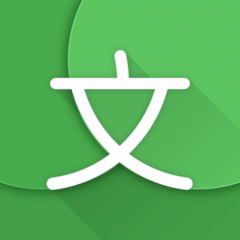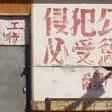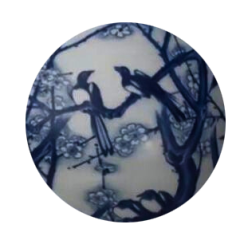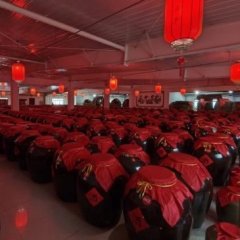-
Latest Topics
-
 0
0By markcarter Started
Really looking forward this major Android update later this year that will allow apps to "explore a broader range of styles and create visually striking layouts that were previously difficult or impossible to achieve". Read more about it here: https://developer.android.com/about/versions/15/features#cjk-variable-font -
 3
3By Dlezcano Started
As a user of different keyboard configurations (Chinese, Japanese, Cantonese and Spanish), writing Chinese on my computer can sometimes drive me crazy since I do not have enough feedback from on-screen information (tiny language bar symbols, unable to know chosen keyboard, etc.). The other day I came across with some info about a device called Stream Deck, which can have a different number of physical keys with a built-in screen under them. Users can set-up those keys in order to start different actions on their PC, so I thought maybe it could be helpful for toggling keyboards and getting a visual confirmation about the language you are using (for instance a key becoming 粤 when writing cantonese). Unfortunately this device is quite expensive and I am not sure whether I would be able to program the buttons, so I am making this question today to know if someone here has ever used one for these purposes. By the way there is an alternative called Touch Portal that could do the same actions with the help of a mobile phone, but unfortunately I was not able to connect my iPad to my computer since it does not support USB mode and I also can't use a WiFi in the place where I am staying. -
2
By Yonidass Started
Can someone tell me what this means? This is done by a Korean calligrapher many years ago and I've forgotten the meaning. Thanks. -
 2
2By mikelove Started
We've decided we need to ship some sort of official support for a couple of Chinese topolects in Pleco 4.0 - rather than expecting users to go through dozens of pages of reference documentation to figure out how to do so themselves - and I'm looking for some advice on which romanization systems to default to and how to use them. Hokkien: it seems like Tâi-lô is the predominant system, and for the most part we can approach it like we do Mandarin and (Yale) Cantonese - search with suffix tone numbers and display with diacritics. Does that make sense? Hakka: there seems to be more active competition here, but since, as with Hokkien, the Taiwan MOE seems to publish a lot of material for this and it generally seems like most of the interest in working with Hakka languages is coming from users in Taiwan, we should probably follow their 臺灣客家語拼音方案 scheme, correct? The Wikipedia article on that shows floating diacritic marks after syllables, but then the actual MOE Hakka dictionary uses superscript numbers, 2 per syllable, which to me look tidier - would the latter system likely be acceptable to most users? And for searching, would we want to let you enter zero or two digits and ignore suffixes of just one digit? Wu: again more competition but I get the impression that the most favored system at the moment is Wugniu? And that between sandhi chains and other complications online dictionaries generally don't bother to make the tones searchable? Is it worth the trouble to implement a sandhi notation system like Wiktionary's? (it seems like they've got about the only open-source dictionary data for Wu anyway) Sichuanese: it seems like the system to use here is Sichuanese Pinyin, which again we can treat like regular Pinyin but with more syllables and superscripts instead of diacritics? -
11
By Juergen Started
Hi, couldn't find any recent post about it, that's why I opened up a new one and hope it works out. I moved recently to Zhangjiagang and would like to meet other expats or English speaking people to hang out to find new friends or to have a good time. Because of the language barrier it isn't easy to spend free time in company in a meaningful way. Male, 49 years, built in Austria and worked amongst European locations for more than two decades in Sri Lanka in textiles, as I do here in China as well. Please feel free to contact me via WeChat: juergenishere Cheers, Juergen -
2
By Dawei3 Started
I had wondered how about numbers of foreigners living in China before and after the pandemic. The Wall St J had an article on it (19Mar2024). It's an article on Beijing's attempt to woo foreigners to live in China, but that it's a tough sell. Last year, China gave out 711,000 residence permits to foreigners, down 15% from 2019. Shanghai went from 70,000 in 2020 to 50,000 in 2019. Before the pandemic & now, South Korea has had the largest population in China. It surprised me that SK also showed one the biggest declines; i.e., 30% down to 216,000. In contrast, Japanese showed a drop of just 13% to 102,000. This surprised me because I thought Japan had more tension with China than SK. Any thoughts on why so many South Koreans have left? (I expect for economic reasons, but why didn't this impact Japanese equally?) The UK might have had higher % decline than SK, but the article just shows a bar graph, not the actual numbers. It looks like there were more Brits than French before the pandemic, but because of the larger drop in the UK citizens, now France has more. (As a guestimate by looking at the bar graph, pre-pandemic, the UK had ~40,000 and now it looks like ~20,000.) The US doesn’t track # of citizens in China, so those numbers aren’t available. I'd be very interested to know USs. Also, the article doesn't mention the numbers for other countries. If you have more to add, I'd be interested. -
 1
1By harryson8x Started
I don't understand the writing on this metal bar. Is there any expert who can help me translate it into Simplified Chinese -
16
By liqi Started
Hello! So, I came to tsinghua this semester for the chinese language program, but... I felt it was kinda dissapointing. The classes themselves aren't bad, but I feel like the course is pretty badly structured, there's only 3 levels: beginner, intermediate and advanced, with no sublevels. That means you finish beginner at around HSK3 with 500 words and next semester you're expected to go to intermediate that starts at 3000 words 🫠. And although the campus itself is amazing, life in Beijing feels kinda dead to me, I dont know, too big for it's own good. Almost everything in Haidian turns off after 10PM, no street vendors or markets, everything's far etc (although transportation is great) I don't wish to stop my studies here after just one semester though, so I'm looking at options in other universities and cities. I'm looking for something less "perfect" and mega than Beijing and more “down to earth", Tsinghua's campus is great, too great even that there isn't much need to do anything outside it. I have in mind Sichuan University in Chengdu, really loved the city and the campus location is great, but I dont know how the uni is or if it's any good. I also absolutely LOVED Chongqing (although my legs didn't), felt like a true megacity for me, although I can't really pinpoint a reason why. Would love to hear opinions about this from y'all! Thanks!😁 -

-
7
By aeitodd Started
Hi! My chinese name is 杜若滢 and I want to know how I can introduce the characters when I meet someone for the first time My friend 孟丽英 says 孟子的孟、美丽的丽、英国的英. I know my 滢 is a little unusual so I particularly meed help introducing this. Thanks!
-
-
Blog Entries
-

-
 0 comments
0 comments -
 0 comments
0 comments -
 0 comments
0 comments -
 0 comments
0 comments
-
-
Recent Posts
-
-
Popular Contributors
-
1Susi12
4 -
2
 cncorrect
cncorrect
4 -
3abcdefg
3 -
4
 PerpetualChange
PerpetualChange
3 -
5Juergen
3
-




